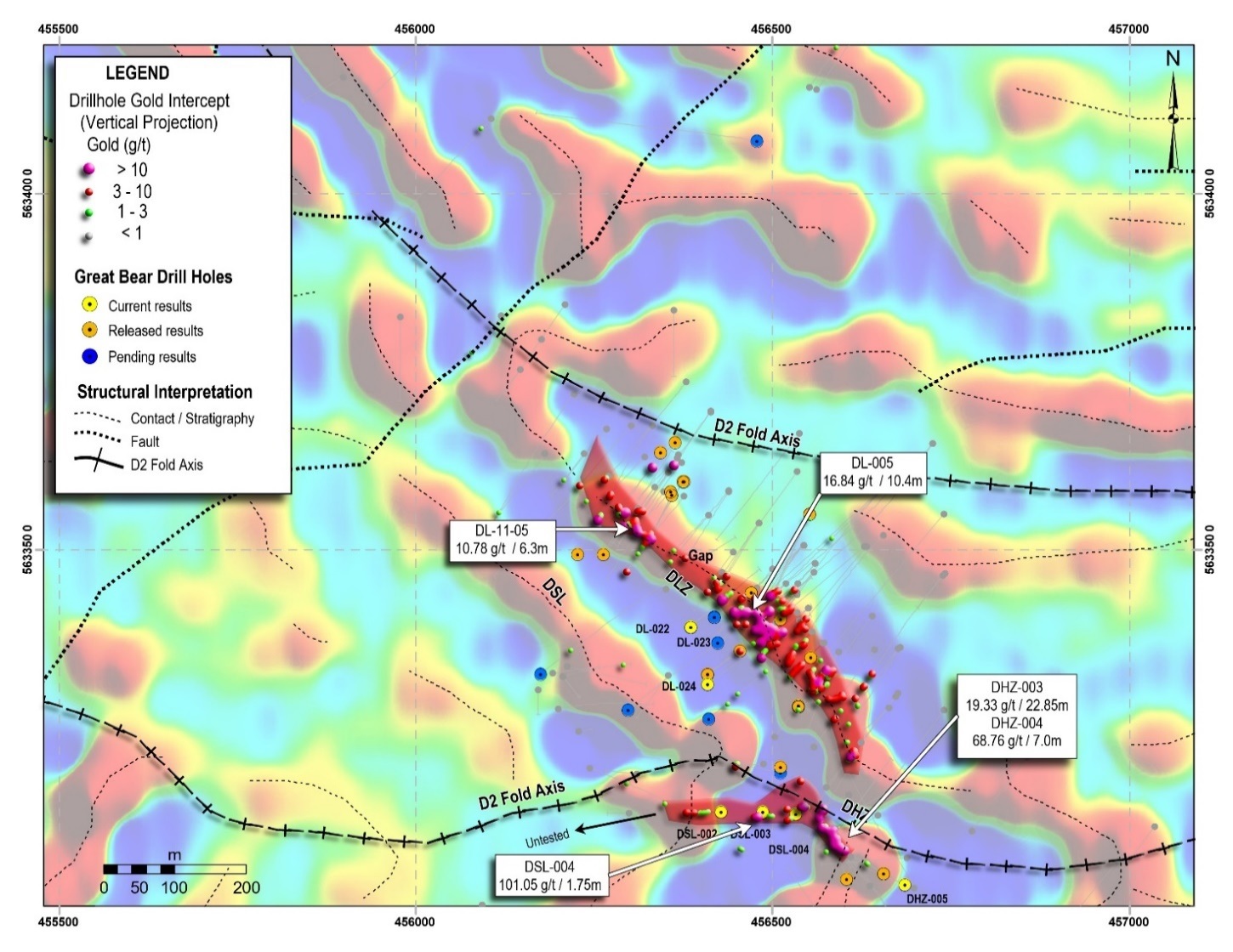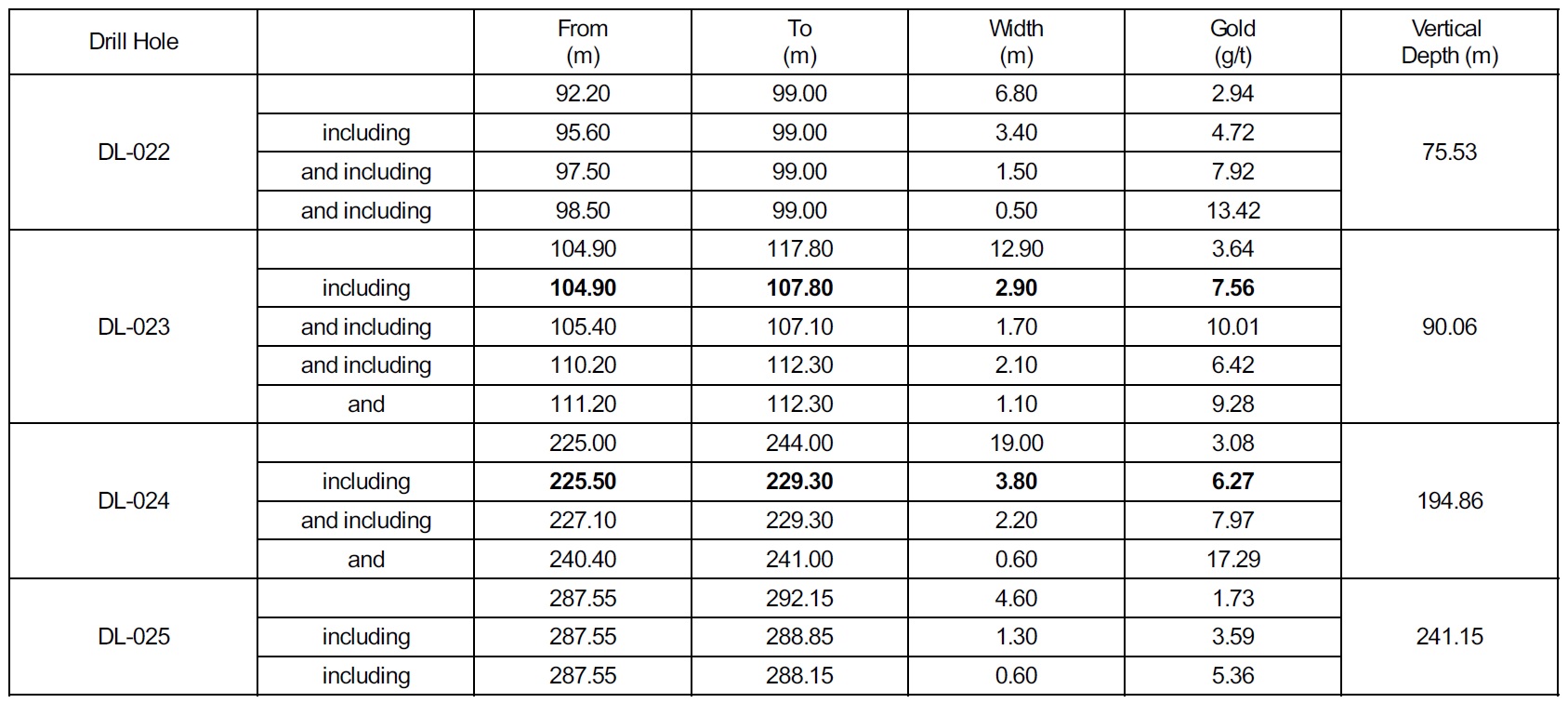
Drill results are still rolling in at Great Bear Resources (GBR.V) as the company has released assay results of just a fraction of its drill program which has recently been expanded by an additional program of 30,000 meters in 150 holes.
In last week’s press release, Great Bear released the assay results from the South Limb Zone at its Dixie project in Ontario. The holes were drilled just 100 meters west of the two discovery holes at Dixie which sent the stock 200% higher over the past 6 weeks, and the gold grade encountered in hole 4 at Dixie South Limb is the highest grade ever drilled at the project. The drill bit intersected 1.5 meters at 101.05 g/t (including 0.5 meters at almost 347 g/t gold) within a wider interval of 10.35 meters at 18.23 g/t. Most operators like to smear these ultra-high-grade results over an interval that’s as long as possible, but Great Bear is playing it fair: outside of the 0.5 meter interval, the residual gold value in the remaining 9.85 meter intercept is approximately 1.55 g/t. And when looking at the grade distribution of that hole, the assay results seem to confirm the typical crack-seal nature of the veins at the Dixie South Limb.

Just like the other holes drilled at both SLZ and the Hinge Zone, the gold mineralization occurred very close to surface (starting less than 75 meters below surface in hole 4), and that explains why the average depth of the holes of the ongoing drill program is just 200 meters. Great Bear simply doesn’t have to go deeper than that to test its exploration theory.
A little bit further north of the Hinge Zone and South Limb zone, GBR also drilled a few holes at the main ‘limb’ zone. All four holes intersected shallow gold mineralization as well with for instance 6.8 meters containing almost 3 g/t gold starting at a vertical depth of less than 76 meters, while other holes encounteres 2.9 meters of 7.56 g/t gold and 3.8 meters containing 6.27 g/t gold:

Great Bear also drilled a geological hole to the southeast of the Hinge Zone discovery to gain more information about the features of the so-called D2 fold axis. This fold plays a very important role in Great Bear’s exploration strategy as this D2 fold is exactly what’s controlling the gold structures at Goldcorp’s (GG, G.TO) Red Lake gold mine, a little bit further up north. Despite this hole being just a technical hole, it did encounter gold mineralization as well (1.4 meters containing 1.17 g/t). Nothing too impressive, but it’s really intriguing to see Great Bear finding gold all over the place.
Great Bear appears to be far beyond the ‘smoke’-phase and it looks like it has hit a full-blown fire on the Dixie project where the gold mineralization appears to be widespread. The fully-funded 30,000 meter drill program will help the company to gain valuable insight in the structures that are controlling the gold mineralization and will help to connect the dots of the mineralization in order to build a maiden resource estimate later on.
Go to Great Bear’s website
The author has a long position in Great Bear. Great Bear is a sponsor of the website. Please read the disclaimer

